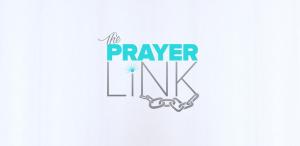More Than a Song
The national anthem is a stirring song that can move even the most apathetic American. The author of the anthem was a devout Christian.
Transcript
BALTIMORE - It was during the closing months of the War of 1812, the year was 1814.
The British fired more than 1500 mortar bombs on Fort McHenry in Baltimore.
A young lawyer by the name of Francis Scott Key anxiously watched the battle from down river, held prisoner on a British ship.
"They also communicated to Key and his companions, 'But you can't leave until we've done away with Baltimore,'" said Alan Gephardt, expert on Francis Scott Key.
For 25 hours, he watched the bombardment of the fort. Would it ever end?
Finally on the morning of September 14, 1814, the cannons were silent. Through the smoke, the stars and stripes boldly waved -- the Americans were victorious.
This emotional experience inspired Key to write a four-stanza poem that would become our national anthem.
So who was this man, inspired by the red, white and blue over Fort McHenry? Key was a man devoted to his country, his family, and God.
Key was raised in a Christian home.
Gephardt said, "His mother led prayers, not just for the family, but also for the servants, and so they would all gather around and have prayers in the evening."
After the War of 1812, the lawyer even considered going into the ministry.
Key was a cofounder of the American Sunday School Union, giving generously to seminaries, missions, and organizations that educated low-income children.
"He was a very fair-minded person, very charitable," Gephardt said.
He also wrote hymns: "Lord, with glowing heart, I'd praise Thee, for the bliss Thy love bestows, for the pardoning grace that saves me, and the peace that from it flows."
Key's faith in Jesus Christ motivated him throughout his entire life.
He's buried in Frederick, Maryland, near his childhood home.
"His family remembered his wish to be buried, as he said, 'beneath the shadow of the everlasting hills, the Catoctin mountain range' that was to the west of where he grew up and where he started his married life and law practice here in Frederick," said John Fieseler of the Tourism Council of Frederick County.
You can see the large monument, a statue depicting Key pointing to Old Glory.
On the back of the monument, you'll find all four stanzas of The Star Spangled Banner.
Fieseler said, "All four taken together are a pretty good reflection of just what he went through and where he wound up, and I think that speaks to the importance of faith in his life."
The final stanza of the national anthem reads, "And this be our motto: 'In God is Our Trust.'"
Key truly believed those words.
Download
Right-click on a link below and choose "Save link as..." to save the file
High Definition - MP4
High Quality - MP4
Low Bandwidth - MP4





